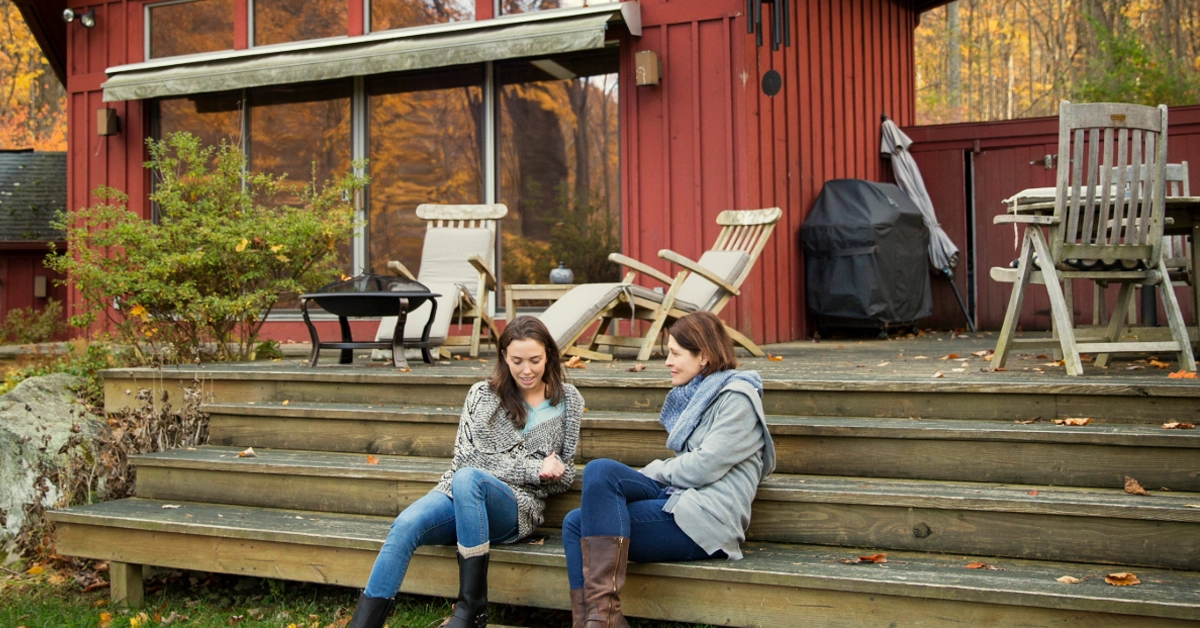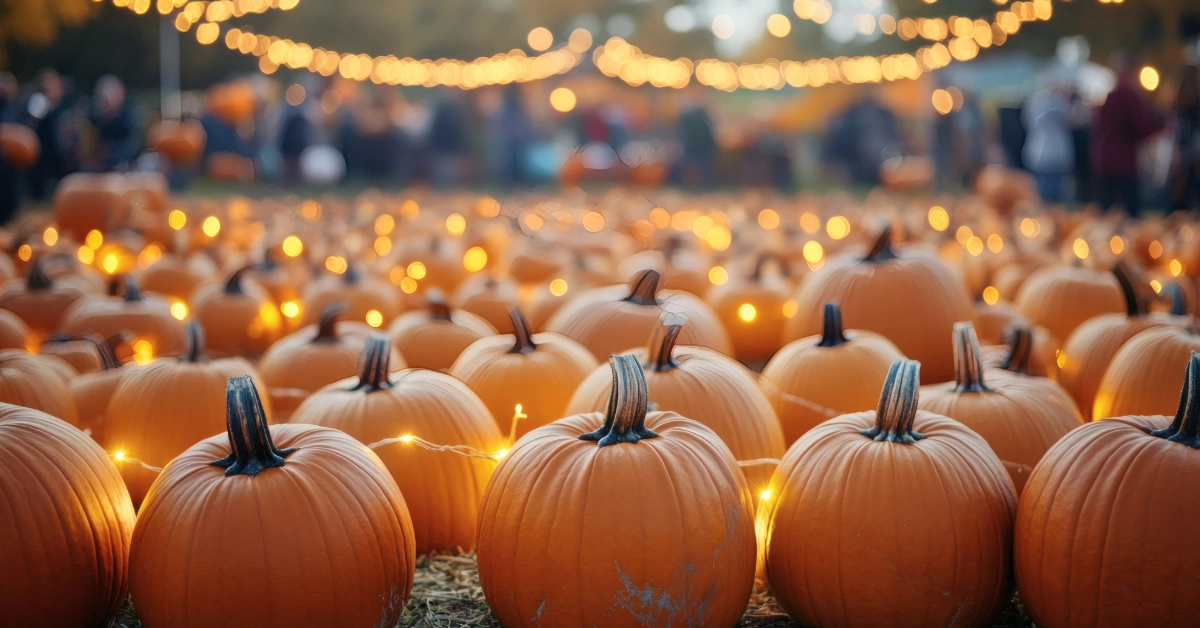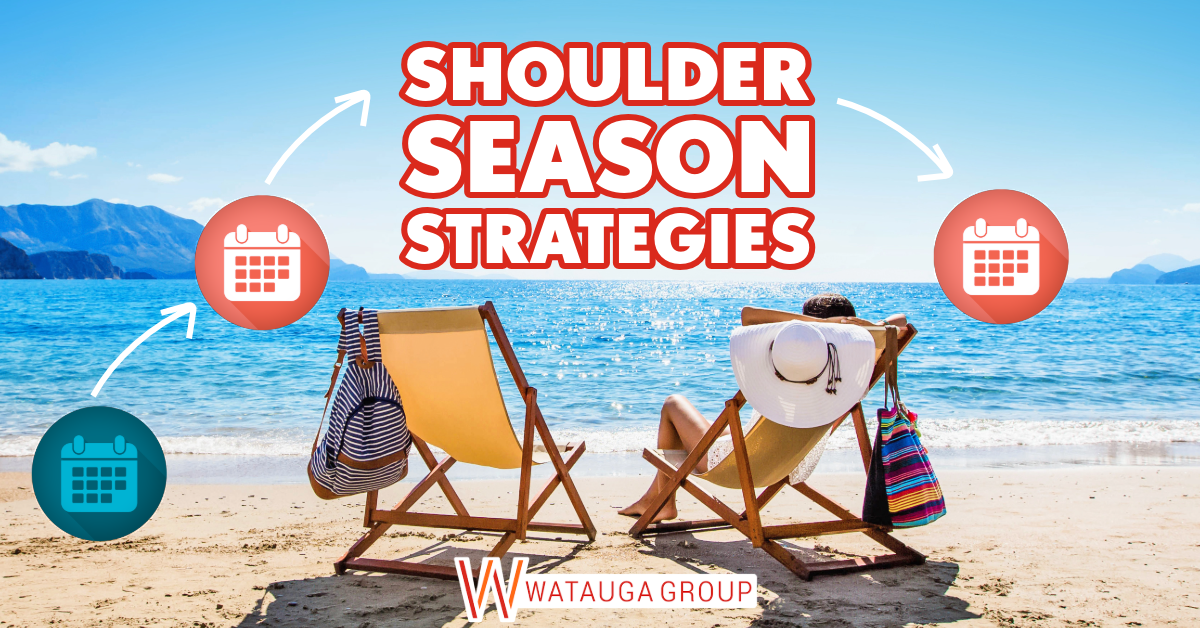Destination marketing isn’t just for attracting visitors during the peak season. Marketing execs also know it’s a game-changer for the ‘shoulder’ season, which is typically the time of the year between a destination’s peak and off-peak periods.
The shoulder season presents a strategic opportunity for destination marketers who want to maintain year-round engagement, capitalizing on the desire for less crowded and more authentic experiences.
Learn why you should market in the shoulder season, what it entails, and some of Watauga Group’s success stories.
Read more: Advertising Strategies for Shoulder Season Travelers
The Shoulder Season, Explained
The exact time of the shoulder season will differ depending on the location, visitor trends, and other factors. However, it’s usually in the spring, fall, or both — when interest in travel softens a little, even if it doesn’t completely disappear.

Forty-nine percent of U.S. consumers planned to travel in the fall of 2024, according to a survey from Vacasa, showing the growing popularity of shoulder season travel. In a separate study, 12% of Travelsavers and NEST agencies said shoulder season bookings were up 10% or more in 2025 from 2024.
Various drivers will determine how shoulder season plays out:
- Weather: Maybe not as great as the peak season, but still pleasant in many regions.
- Work flexibility: The rise in remote work and midweek travel makes the shoulder season just as attractive as the peak season for many visitors
- School schedules: Shoulder season offers an opportunity to target non-family audiences, such as couples, retirees, and solo visitors
- Cost: It’s typically less expensive to travel at this time of the year, meaning you can target cost-conscious visitors who crave value and less-crowded experiences
Ultimately, it all depends on regional travel habits and trends. Some destinations, for example, default to ‘quiet’ mode during the shoulder season, offering few local attractions, excursions, and experiences because of low visitor demand. This can present tourism seasonality challenges for destination marketers, especially when it comes to motivating visitors to travel. Highlighting off-peak travel packages and adjusting ad spend to focus on those looking for value (due to lower hotel and flight prices) may help overcome this and improve visitor flow throughout the year.
Consider running scenario-based forecasting models so you can determine demand among different demographic segments for a destination at different times. You may then want to adjust campaign spend from the peak season to the shoulder season to capture potential visitors at slower periods and not overspend during busier periods. Beyond that, use behavioral analytics to create messaging for these segments.
Shoulder Season Tourism Strategies You Need to Know About
For more successful shoulder season marketing, consider engaging potential visitors with storytelling, localized targeting, and adaptable messaging. Storytelling, for instance, can result in a 30% increase in conversion rates.
Here are some specific strategies you might want to consider:
Highlight What’s Unique About the Shoulder Season
Showcase what makes a destination attractive during this time, whether that’s fewer crowds or a slower, more relaxed atmosphere. You can even highlight seasonal scenery, such as spring blossoms or fall foliage. For older visitors, this may elicit certain emotional feelings, such as nostalgia.

Think about the general ethos of the destination you’re marketing during the shoulder season and incorporate this into your campaigns. For instance, you might want to create messaging, such as geotargeted ads, based on the following themes — all of which will evoke emotions in potential visitors:
- Relaxation: Shoulder season presents an opportunity to relax without the stress of off-peak crowds. Visitors, for instance, can enjoy quieter beaches or less busy museums and restaurants, resulting in potentially more meaningful experiences.
- Authenticity: With fewer crowds, a destination’s culture becomes easier to access for visitors, allowing them to experience day-to-day life in that location in a more authentic way.
- Connection: With greater access to cultural events and local experiences, visitors may be able to connect more deeply with communities and gain a deeper understanding of a destination’s traditions and way of life.
Messaging can showcase the scarcity or exclusivity of travel experiences during shoulder season — for example, “live like locals do before the crowds arrive” or “fewer crowds, more freedom to explore.”
You can also highlight any cultural events that tie into public holidays or seasonal celebrations that take place during the shoulder season. For example, ZOMBIEzi Bay was a Halloween-themed event at Zoombezi Bay, a 22.7-acre water park near Powell, Ohio. Watauga used brand and audience insights to broaden messaging and target a wider audience when marketing this event, shifting media spend to earlier in the Halloween season and refining geographic targeting to boost efficiency.
After the campaign, attendance reached the highest in ZOMBIEzi Bay’s history, with a 33% year-over-year increase despite 10% fewer days of operation. Also, online ticket sale revenue doubled, while return on ad spend improved by 56%.
Learn more: Success Story: Zoombezi Bay
Promote Local Events and Seasonal Moments
Is there a popular fair, market, art walk, or food festival happening during shoulder season? If your destination has something going on at this time, you may want to create a campaign around it.

For example, Visit Panama City Beach’s UNwineD is an exclusive two-day outdoor food and wine event that happens during the spring. Watauga combined social media, display, pre-roll, native advertising, digital billboards, print, and custom audience targeting to market this event to potential visitors. We also created on-site VIP activations featuring celebrity chefs and sommeliers. After the campaign, attendance increased 42% year-over-year, with sold-out events in 2023, 2024, and 2025.
If your budget allows, you can even collaborate with local travel partners to curate an event of your own. That might be a harvest dinner, spring wildflower trail, or something else entirely. You can then position this event as an authentic local experience to attract visitors. Also, consider creating bundled experiences that include activities from several partners.
Target the Right Visitors
Not everyone wants to travel during the shoulder season. Families with kids, for example, probably prefer peak times that align with school schedules.
You may not want to waste your time on these segments. Instead, you can use AI-driven segmentation to identify more flexible visitors who desire unique and authentic experiences that they can’t find at any other time of the year. These demographics may include remote workers, digital nomads, and couples without kids. Other visitors, such as seniors, may not be tied to work or school calendars, allowing them the flexibility to travel at any time of the year.
Like any other visitor group, you’ll want to target your desired audience with personalized marketing that speaks to their behaviors, needs, and wants. For instance, childless couples might respond well to messaging that emphasizes a quieter atmosphere — fewer screaming kids! — and, depending on the location, considerably lower prices than peak season.

Use predictive analytics to deliver this marketing around certain traveler intent signals, such as searches for flights to a particular destination and engagement with travel content.
Alternatively, promote a ‘spontaneous’ getaway to audiences that wouldn’t normally consider traveling at this time of the year but desperately need a break. You can do this by using language that emphasizes this spontaneity, such as ‘on the whim’ and ‘last minute.’
Be Flexible in Your Marketing
There’s often a reason why destinations have a peak season, an off-season, and a shoulder season. The latter, for example, might experience unpredictable weather, less ‘buzz,’ or limited attractions.

That’s why you should always highlight flexibility in your shoulder season marketing. This may involve paid ads, social media reels, and other messaging that promotes easy-to-reschedule policies or weather-proof guarantees, which can certainly provide visitors with peace of mind.
In addition, consider advertising short booking windows that encourage visitors to act quickly. You can do this with some light urgency in your messaging — for example, something like:
“Get away this weekend. It’s still beautiful here!”
Alternatively, you can use dynamic content and geo-fenced push notifications that let you adapt to unpredictable seasonal conditions, like when foliage peaks earlier or later than usual:
- “Tree leaves are falling earlier than expected this year. Come see the colors before it’s too late!”
- “Tree leaves are slower to fall this fall, so it’s not too late to experience the magic. Book a last-minute trip now.”
Implementing Your Shoulder Season Strategy — and Then Optimizing It
Here are some ways to create a killer strategy for your shoulder season marketing:
Use Storytelling Across All Touchpoints
Storytelling isn’t just for travel brochures. Authentic narratives that connect with audiences on an emotional level can highlight the unique benefits of traveling during the shoulder season — for instance, experiencing a destination more authentically. An example of this is a short-form video about a guided tour of an uncrowded hiking trail, something that might not be possible during peak travel times.
Also consider storytelling when encouraging potential visitors to book a last-minute trip during the shoulder season. The right narrative can boost bookings by playing on the emotional payoff of visiting now — spontaneity, being a free spirit, etc.
You can always come up with content themes that bring the benefits of traveling during the shoulder season to life. These themes might be “quiet moments,” “authentic flavor,” and “more space to explore.”
Another idea is to integrate curated itineraries into different content assets such as landing pages, social media updates, and blog posts. This provides potential visitors with actionable next steps for planning their trip, such as booking a table at a local restaurant.
For even more targeted marketing, itineraries can focus on different demographics — say those who enjoy outdoor adventures. This travel segment craves authentic experiences, so perhaps include customizable activities that allow them to interact with local communities and immerse themselves in a destination’s culture. For example, a kayaking tour on an off-the-beaten-path lake with a native instructor.
Strengthen Regional and Local Partnerships
Local influencers, content creators, and tourism ambassadors can also optimize your campaigns with community-driven tourism marketing. They know what travel’s really like during the shoulder season and can help you market different attractions and experiences that you might not have known about. Together, you can convey to audiences what makes traveling at this time particularly special.
Whichever partners you work with, feature them in seasonal content marketing for destinations. For instance, you can include a local influencer in an Instagram video that spotlights ‘under-the-radar’ experiences during the shoulder season that people can’t find in a travel brochure. Alternatively, develop hyperlocal travel itineraries with your destination’s tourism board and post them on landing pages.
Invest in Data-Driven Tourism Marketing
Analyzing the latest data is the only way to know whether your shoulder season travel marketing is successful or not. Be ready to adjust your campaign timing or channel mix depending on the data insights you receive.
It’s a good idea to test new marketing formats or offers in small bursts and then scale them up if successful. For instance, you might want to create a limited-time campaign on one social media platform that promotes shoulder season vacations and then expand it across other platforms if click-throughs and, ultimately, bookings increase. Focus on nuanced KPIs when measuring the success of online campaigns, such as session depth on high-intent landing pages and emotional sentiment tied to social media posts.
Making the Shoulder Season Work for You
Here are some final tips for your next shoulder season marketing strategy:
- Knowing why you should market in the shoulder season is important. Do you want to increase visitation? Attract new audiences? Boost revenue? Do something that your competitors aren’t?
- Successful shoulder season marketing isn’t about repeating the same playbook; it’s about context and recognizing the nuances of traveler behavior and motivations.
- Embracing flexibility in your messaging and offers makes shoulder season travel more desirable for potential visitors. Consider highlighting spontaneity in campaigns, using adaptive marketing strategies for tourism, and implementing flexible booking policies for travelers.
- Think beyond traditional high/low season definitions by reframing the travel calendar around emotional needs rather than set-in-stone dates. For example, you can position the shoulder season as ‘reconnection season’ or ‘self-care season.’ Alternatively, align this time of the year with specific regional drivers like harvest festivals or fall foliage.
Remember, a successful shoulder season strategy is more than just highlighting discounts. You should tap into why visitors may want to travel during this period in the first place. That might be to fulfil an emotional need or encounter authentic travel experiences. The messaging you use can appeal to those desires and encourage people to hit that ‘book’ button.





